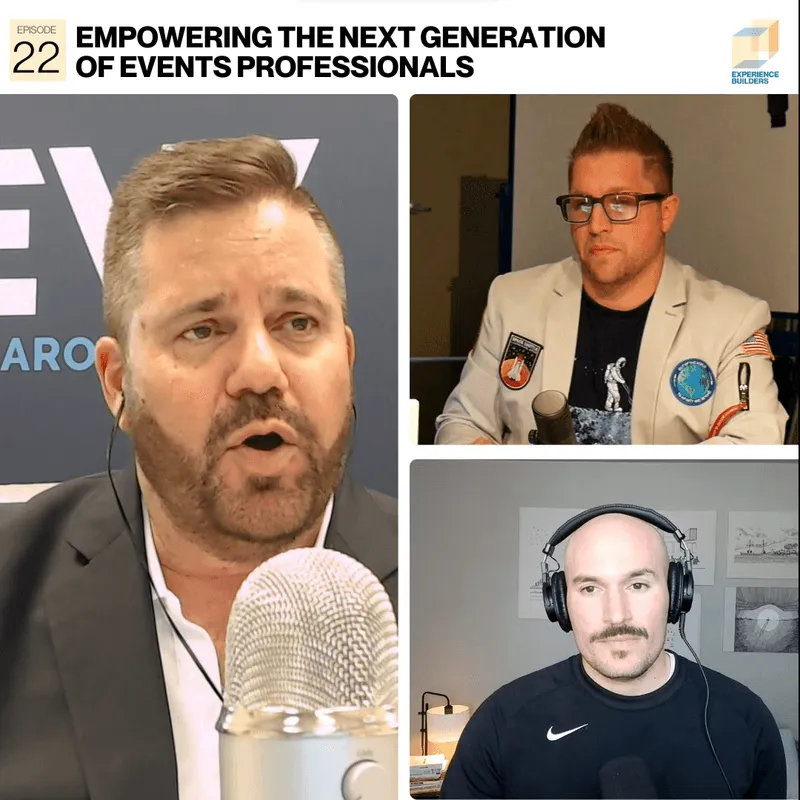 Transforming Crews to Relationship-based Partners
Transforming Crews to Relationship-based Partners
I&D Crews Customer Service – Does it Matter?
More than 12 years ago, Randy Eppard and Jim Wurm traveled the country teaching customer service skills to union crews. Back then, customer service was a foreign concept to the carpenters, teamsters, and electricians. “They thought of themselves as ‘construction guys’ and considered customer service a ‘feely’ word,” said Eppard, who is a 4th generation member of the United Brotherhood of Carpenters.
Today, there’s renewed interest in teaching soft skills to the trades. Wurm is president of Exhibitor Appointed Contractors Association, a group whose mission is to increase the value proposition of exhibitor-appointed-contractors through exemplary customer service.
But if these “construction guys” are task oriented, why should they care about customer service?
The answer is simple. If exhibitors aren’t happy with their experience at a convention center, they won’t return – which means fewer work hours for the crews. Studies and surveys conducted by convention centers have proven this correlation.
Engaging Crews to Provide Exemplary Customer Service
Improving customer service by I&D crews goes deeper than training the workers on making the customer happy. “The hard skills are required – you can’t come in the door unless you know how to use the tools. But to make the difference, to be the best you can, this is how you have a long-term meaningful relationship with your customers,” said Eppard.
Yet there’s a deep level of employee disengagement in the U.S., regardless of industry. A Gallup poll showed that 70 percent of U.S. employees are “not engaged” or “actively disengaged” at work. According to Ken Viscovich, national representative of the UBC, this statistic is in line with the tradeshow industry.
“When it comes to hiring crews for a tradeshow, there’s a group of crew members that are called upon first. These people work regularly, are skilled, and have a good attitude,” said Viscovich. “However, that core group only represents 30 percent of the workforce. The other 70% don’t have the same motivation or attitude.”
How do you engage a group of people? While extrinsic motivations, like pay raises or bonuses, can drive short-term wins, the key to lasting change is through intrinsic motivations, which come from deep within the individual. As part of the union bargaining agreement, the UBC includes yearly training for its signatory contractors and members. According to Eppard, the UBC’s International Executive Director of the Department of Education and Training, “Education provides intrinsic motivation that inspires people to share, nurture, and grow.”
Transformational Leadership
When earning his doctorate in Human Resources and Adult Learning Development from Virginia Tech University, Eppard wrote his dissertation on “transformational leadership.” Based on the research of James MacGregor Burns and Bernard M. Bass, this leadership approach focuses on nurturing people through example, articulation of a vision, and challenging goals. Unlike the “give and take” of transactional leadership, transformational leadership influences individuals and drives a constructive culture. There are four elements of transformational leadership:
Individualized consideration, which is the relationship that leaders have with individuals. The leader acts as a mentor and celebrates the individual’s contribution. Followers are inspired to grow and develop intrinsic motivation for their tasks. This element is also key to retaining employees. According to Eppard, “The number one reason employees leave their job is a bad relationship with their immediate supervisor.”
Intellectual stimulation is when the leader challenges assumptions, takes risks, and seeks ideas from followers. “Are you letting them be part of the decision making?” asked Eppard. Transformational leaders encourage creativity in followers and nurture independent thinking. They also see unexpected situations as learning opportunities. “Let’s say a follower makes the wrong decision. How do you help them? Do you reem or threaten them? Or, does it become a learning opportunity? If they learn, then they won’t do it again,” said Eppard.
Inspirational motivation is the leader’s articulation of a vision that challenges and inspires followers. When a leader is clear about vision and goals, the followers are focused, have meaning for their tasks, and optimism for the future. “Inspirational motivation creates powerful momentum in a workforce – not only to increase productivity, but also to cultivate individuals and grow the people around them.”
Idealized influence is how followers view a leader. Also known as charisma, the leader becomes idealized when followers believe that he or she works beyond self-gain. The leader becomes a role model for ethical behavior, instilling pride and gaining respect from followers. “What happens when the leader is not around? Under idealized influence, the worker will continue to work at a higher level. They will emulate what they think the supervisor wants. Then supervisors spend less time putting out fires.”
Put the Training to Use
At its campus in Las Vegas, Eppard’s department trains over 30,000 per year in professional development – the soft skills that take individuals to the next level. “When someone comes to our training facility, they leave here a different person. They have a new understanding and skillset to change their lives. It’s significant and emotional,” said Eppard.
At its core, the trainings affect all individuals, regardless of rank or experience. The word “leadership” may be associated with supervisor; it’s not intended to be positional. Any individual can be a transformational leader.
Eppard sees the empowering change firsthand in his trainings. “We teach them to how to develop themselves. They learn that you can’t rely on other people to live life – they learn that you have to do whatever you can. You have to be in the driver’s seat. The trainings give them a chance to feel that.”
Industry Transformation from Executional Producer to Strategic Partner
Over the last 30 years, the tradeshow industry has undergone a transformation from an executional, production-type industry, to a strategic marketing partner for its clientele. Most prominently, this transformation has been seen by the direct relationship between exhibitors and design houses.
Now, the newest piece of the puzzle is the relationship between the exhibitor and the final producers: the I&D crews. By transforming these crews from executional “do-as-I-say” vendors, to relationship-based partners, the industry develops deeper relationships with its customers, and solidifies itself in the marketplace.































